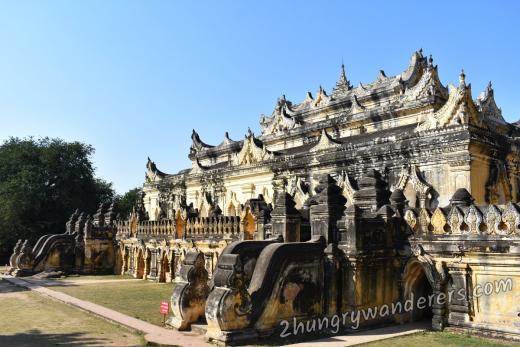
About 20 kms south of Mandalay, the ancient city of Inwa is a popular day-trip destination. Between 1365 and 1842, on five separate occasions, for the total of 360 years it was the capital of Burma (the Kingdom of Ava as it was known to the Europeans up to the 19th century). A series of earthquakes in 1839 devastated the city and the seat of power was moved to a new palace in Amarapura in 1842, leaving Inwa in shambles. Today, it is a village scene with hundreds of stupas and temples scattered around, parts of the inner and outer city walls still intact, and a lone leaning tower to mark the old palace.
There are several options to visit Inwa:
As a part of an organized tour or taking a taxi to the ferry
We did a tour our first trip to Mandalay and it is what most people visiting the city for a couple of days do. We found a tour that covered the attractions around Mandalay - Sagaing, Inwa, Amarapura (Ubein Bridge), the bus stopped on the Mandalay side of Myitnge river, they put us on a ferry to Inwa and gave us a couple of hours to go around on our own. We did enjoy the tour very much at the time, and while it is still a good way to see more of Mandalay in less time, this year we left a whole day for Inwa and did it on a motorbike and realized that on the tour we have not really seen much of the old city.
Another option is to get a taxi from Mandalay to the ferry station, then taking the ferry and crossing to Inwa, spending as much time as you want in the city itself.
Once in Inwa you will have to decide how to go around. There are two options - horse cart or walking. You will be greeted by people offering horse cart rides, a lot of them. You can try haggling, but prices are not going down much. The advantages of the horse ride arethat you are in the shade and they usually go the major tourist spots, plus it is faster than walking (by a little), the disadvantages are that it is bumpy, smelly, will get you to some of the pagodas, but it is not easy to change the route if you have something else in mind.
If you decide to walk, prepare for people trying to dissuade you - "You can't walk", "Too far", "It takes 9 hours" were some of the things we heard going through the crowd of horse carts at the ferry station. While it is not that impossible walking the city is not really pleasant either - the roads are dusty and the sun is hot, going from the ferry to Bagaya monastery it is around 3-4 km. If you decide to walk, the best bet is to stick to the inner city and probably a detour to Bagaya monastery, but don't forget to take water, put on some suncreen, a hat and comfortable shoes, a rain poncho is a good idea for the wet season.
Taking a car tour of the city
You can arrange this with your hotel or with one of the many taxis in Mandalay - a car to take you to Inwa and then drive you to the major attractions. It is a convenient way to see the ancient city, but it is going to be expensive.
Bicycle or motorbike
Those are the two options that I would recommend. We did it on a motorbike this year and were able to see the whole city in one day.
If you go on a bicycle - be prepared that it is 30 km ride to Inwa and another 30 km back, plus the day spent in Inwa. To shorten the ride you can drive to the ferry and take your bike on the ferry, but it still a good 20 km ride there and another 20 km to go back to Mandalay. Unfortunately, we did not see bicycle renting places in Inwa itself, probably the horse cart "mafia" holding the market, so you will have to cycle the whole way from your hotel and back.
We rented a motorbike from our hotel and started the day early after a good breakfast. The drive to Inwa takes about 50 minutes - 1 hour and we entered the city from the main road on the south side, from AH1.
Here is a map of our route, with all the stops along the way. We enter via AH1 from the south and exit the same way back to Mandalay. Download high resolution version of our route map of Inwa.
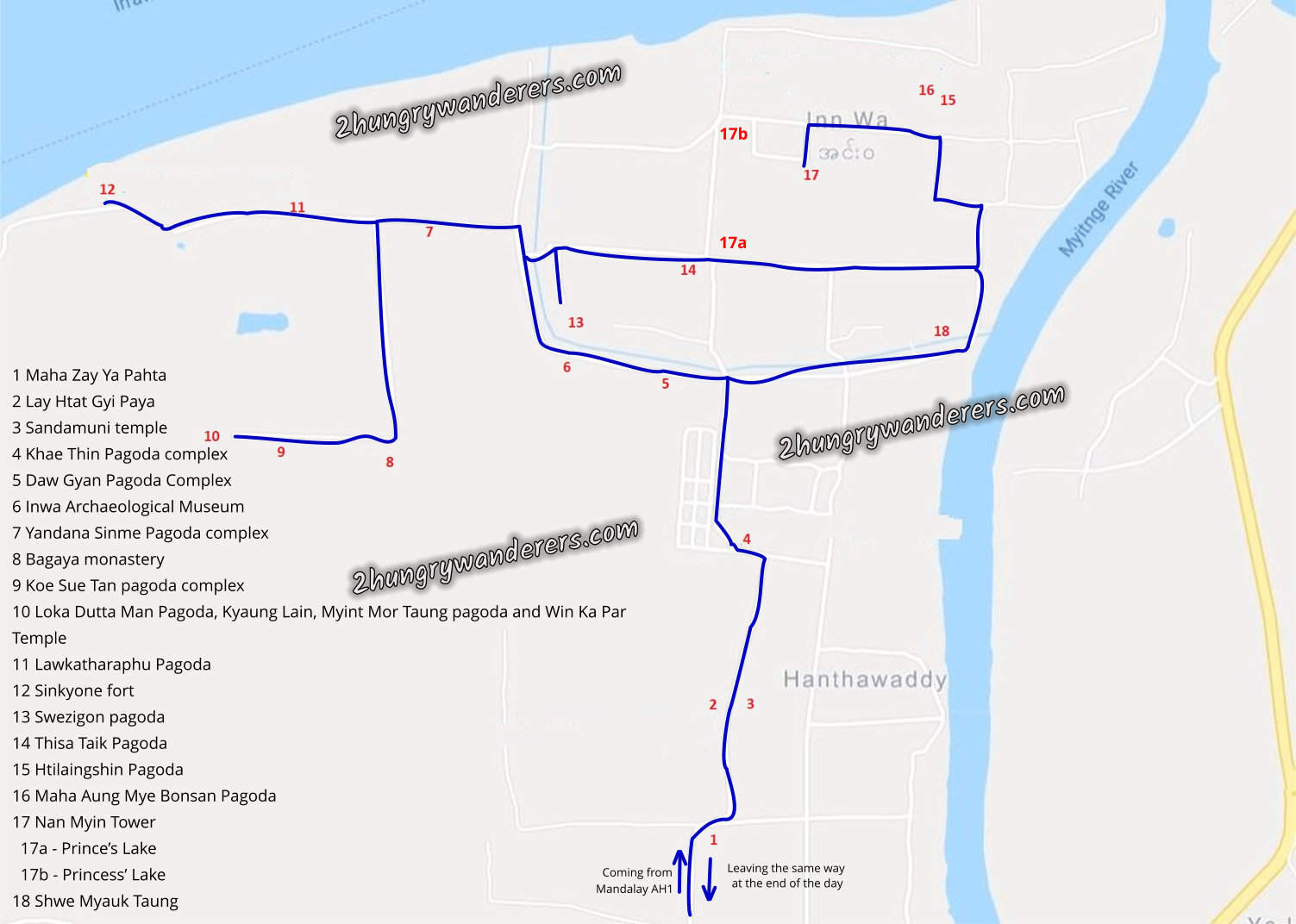
1. Maha Zay Ya Pahta
This is the first temple after entering the outer city walls - not much is left of the walls here, but the pagoda is beautiful - one of the still actively maintained places with a golden stupa, it is on the right side of the road. On the other side is a small pagoda complex, partially in ruins.
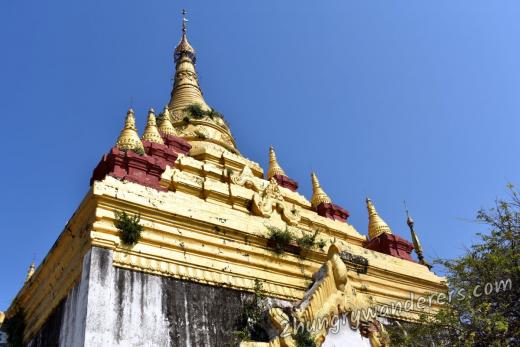
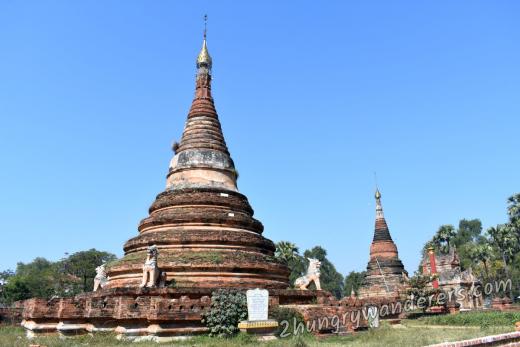
2. Lay Htat Gyi Paya
About 200 m up the road from Maha Zay Ya Pahta, on the left, is the truly impressive Lay Htat Gyi Paya, or what is left of it. Built on a three level terrace this huge temple resembles the one in Mingun.
Devastated by earthquakes, only the left side of the temple is still standing with several huge cracks visible from the inside. Even in this condition a lot of the facade is intact, with ornately carved figures of dragons and other mythical creatures on the walls of the building itself and on the terraces. On the left side there is even some colors on the figures - the red tongues and white teeth of the dragons, probably a lot more were present when the temple was built and used, but faded to the dray of the stone we see today.
Going inside the temple, via the narrow dirt track over the rubble, is still possible and some of the interior details can be seen, as well as the cracks left by the earthquakes.




3. Sandamuni temple
Just across the road from Lay Htat Gyi Paya is the tall golden stupa of Sandamuni temple.
4. Khae Thin Pagoda complex
Continuing to the Inwa inner city is the less popular Khae Thin Pagoda complex, just right of the road it is a small complex with several brick stupas, some still retaining parts of their facades and several chinthe lions standing guards to the ruins. It is a worthwhile stop, no other tourists around, it makes for a nice and quiet walk around the crumbling structures. There are a couple of overgrown brick hills, marking the places of where bigger stupas once stood before the earthquakes.
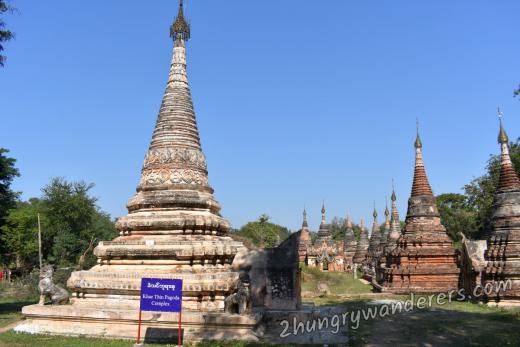
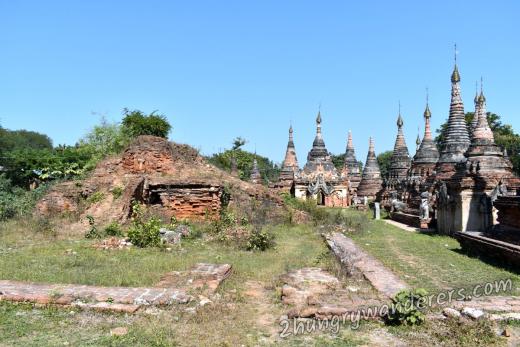
5. Daw Gyan Pagoda complex
Another pagoda complex, just outside the city walls, which are clearly visible over the old moat. Some horse carts and tour buses stop here, but otherwise is a nice and quite place to walk around, explore the Buddha images inside the old temples.
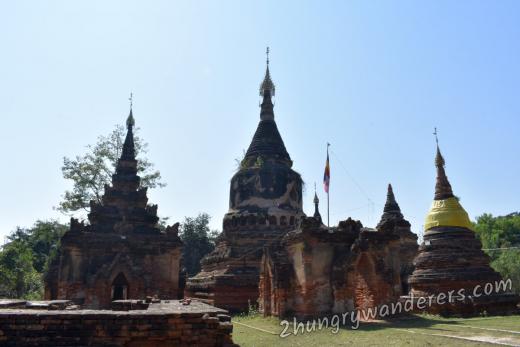
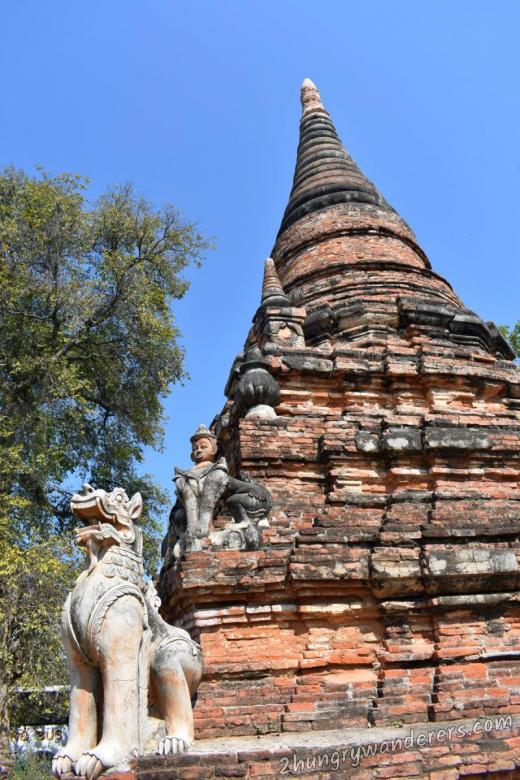
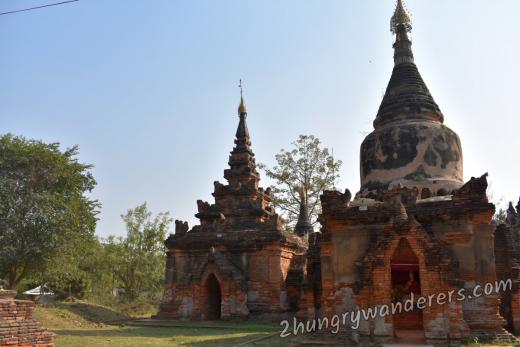
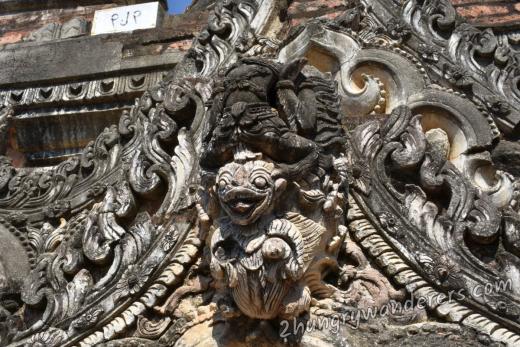
6. Inwa Archaeological Museum
It is a two-hall museum with some artifacts from the old city and paintings copied from the temples of Inwa. Not really that impressive, but it is included in the 5 day Mandalay Archaeological zone pass and worth spending 20 minutes wandering the dusty rooms. There is a good map-model of Inwa with all the temples and stupas, can be a good guide of what to see.
From the road next to the museum is the best spot to take a photo of the shiny golden Shwezigon pagoda - visible over the moat and the city wall.
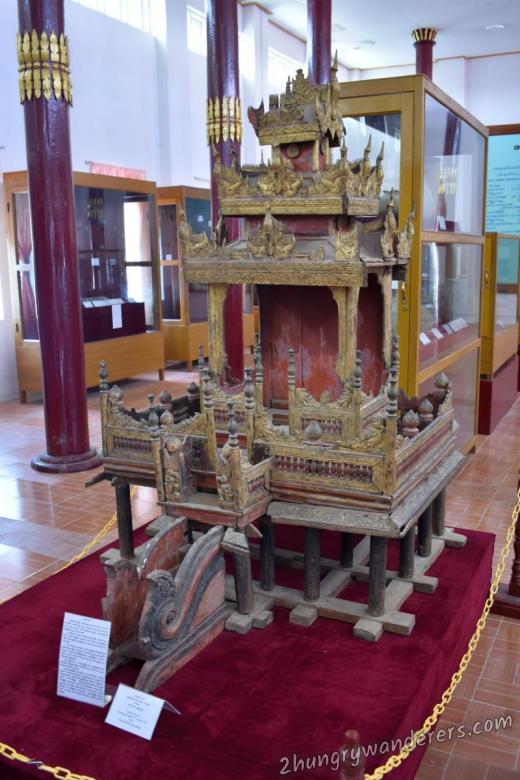
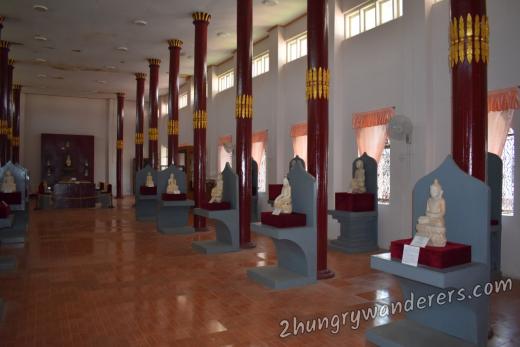
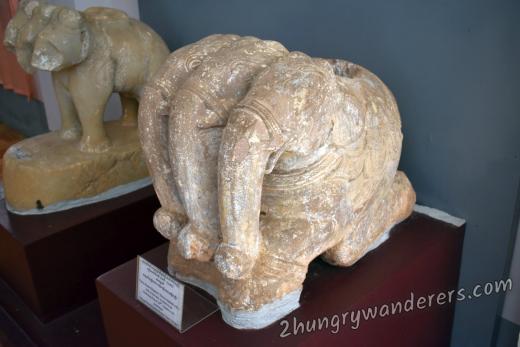
7. Yandana Sinme Pagoda complex
On the left side of the road when going to the Bagaya monastery this place is definitely worth a stop. Several crumbling pagodas shaded by an enormous flame tree and three Buddha statues it is a really picture perfect spot. Here you will find a couple of painters selling their work. The beautiful art makes for a perfect souvenir to take home.
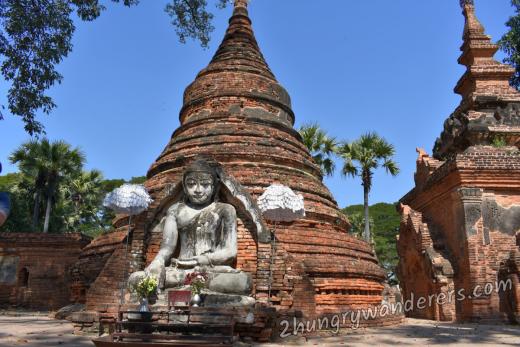
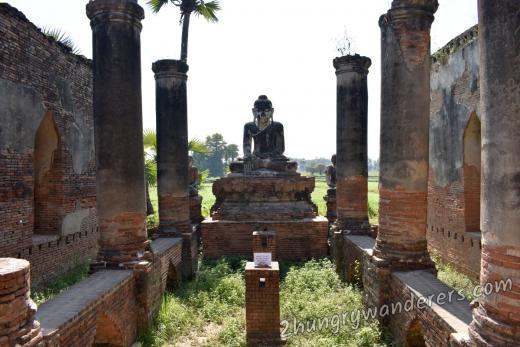
8. Bagaya monastery
A beautiful teak monastery with impressive woodwork and supported by 267 huge teak woodposts. One of the major attractions in Inwa, this place is usually packed with tourists, most coming on the horse cart tours of the city. The ornate wood carvings covering the entire exterior and interior of the place have some astonishing details and are definitely worth a good look.
Be careful when walking bare footed in the monastery, the flooring is not in great condition, despite the beauty of the place you better look down more often and avoid the occasional loose nail or floorboard.
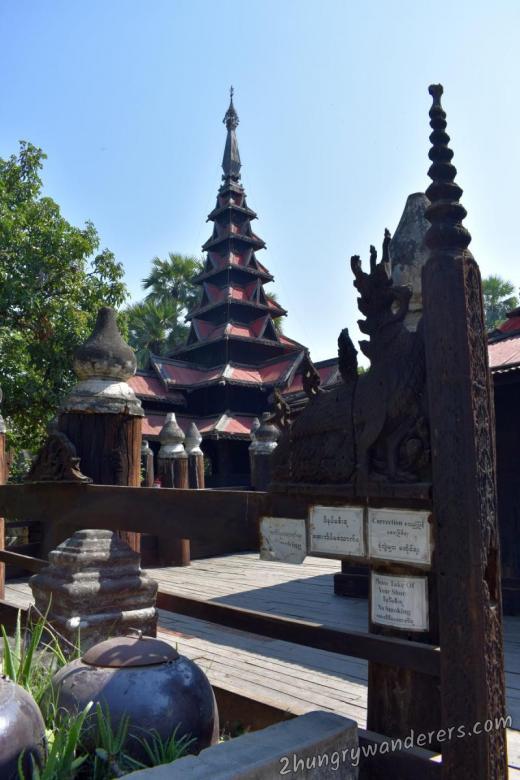
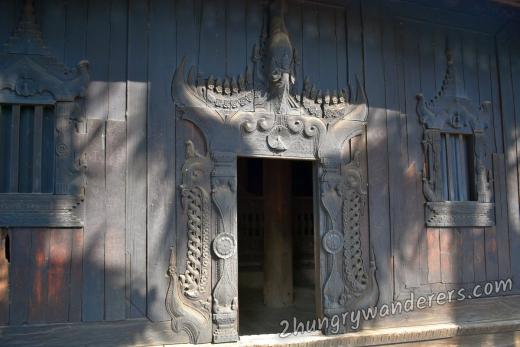
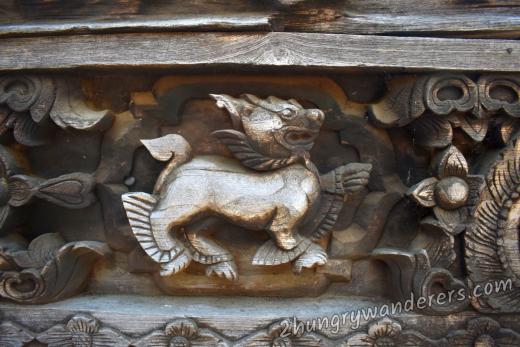
9. Koe Sue Tan pagoda complex
Instead of going back to the main road, we turned left at the entrance of Bagaya monastery following a narrow dirt road. On the left side, a few hundred meters is another pagoda complex. It consists of 9 pagodas, a couple of them recently restored. Very scenic place in the middle of rice paddies.

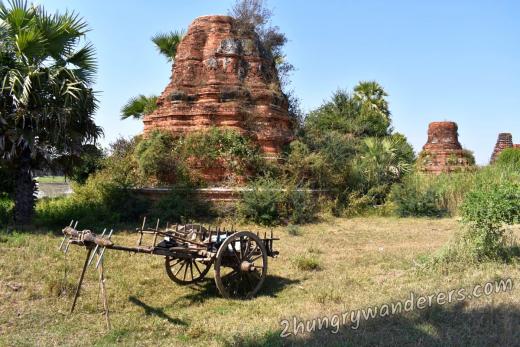
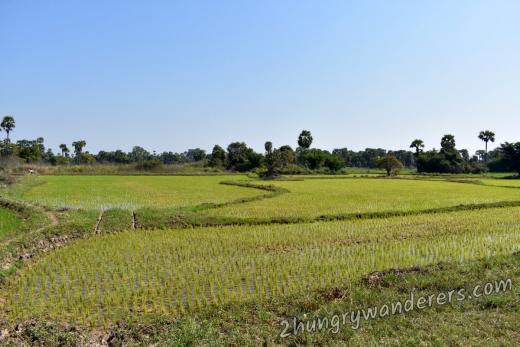
10. Loka Dutta Man Pagoda, Kyaung Lain, Myint Mor Taung pagoda and Win Ka Par Temple
Continuing west on the dirt track you will get to the remains of the outer city wall and three pagodas and a monastery on the right. Almost no tourists get here, so likely you will have the place to yourselves.
11. Lawkatharaphu Pagoda
Going back to the main road we turn left and visited the Lawkatharaphu Pagoda - nothing much to see really, a big golden stupa.
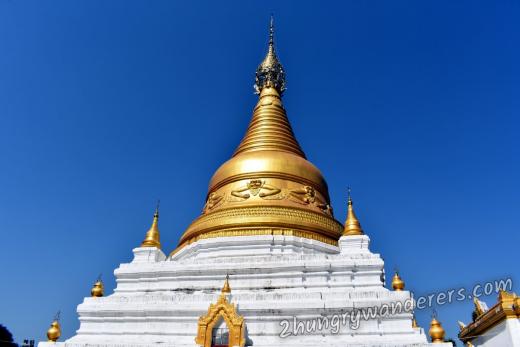
12. Sinkyone fort
Even though the fort is not part of the ancient Inwa city, it is still interesting to visit. It is one of the several forts that failed to deter the British army in 19th century, what is left of it is a low wall and a couple of cannons. It is on the Irrawady river and presents good views of it and the adjacent Sagaing.

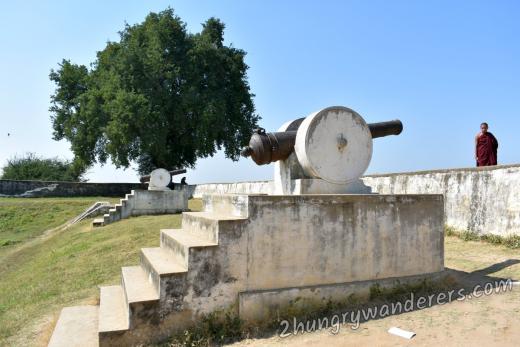
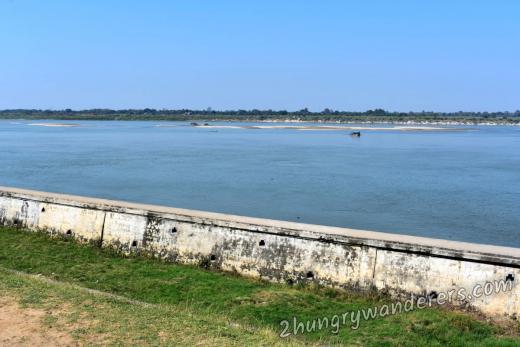
13. Shwezigon pagoda
Going back to the city and crossing the inner city wall through the west gate we first went to visit the shiny golden Shwezigon pagoda. Even though a quiet walk trough the empty yard around the temple is a nice, the truth is this pagoda is more impressive from afar, for example across the moat and in our opinion can be skipped, a closer look is not really necessary.
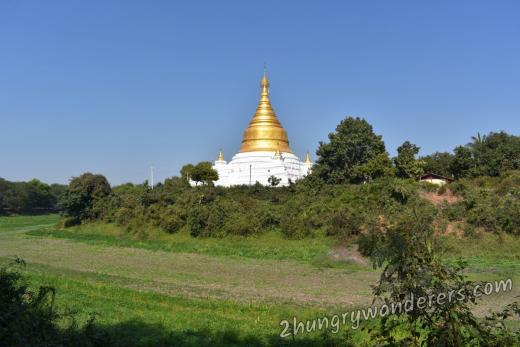
14. Thisa Taik Pagoda
Beautiful whitewashed temple with stucco decoration, some of it looks recent and made of cheap gypsum, but behind this temple, a little bit up the hill is another small pagoda with a golden spire and original marble chinthe guardians. There are some cracks in the figures, but the craftsmanship is exquisite.



15. Htilaingshin Pagoda
We parked our bike next to the many vendor stalls selling souvenirs and refreshments, at the foot of the stairs up to this whitewashed pagoda with a line of golden spire stupas dating back to the Bagan period. It was quiet and peaceful, most tourists are drawn to the impressive Maha Aung Mye Bonsan temple next door.
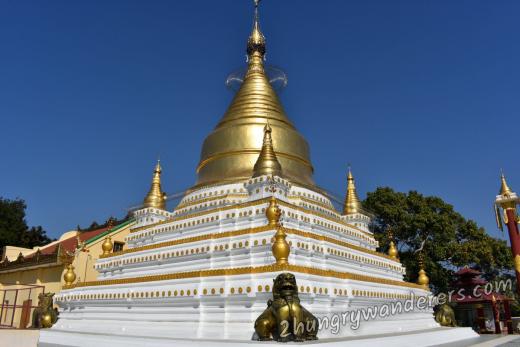
16. Maha Aung Mye Bonsan pagoda (Me Nu Brick monastery)
A rare remnant of the Ava period, this 1822 brick temple has an exquisite stucco exterior, beautiful and quite photogenic from every angle. The main floor chambers are mostly empty but for a couple of Buddha images, but provide cool air behind the thick temple walls.
The undercroft is dark and cool, a bit damp and dirty, nothing much too see but for some sleeping bats.
Walking behind the temple and down the stairs the old monk's residence building is still barely standing, now locked and abandoned. Walking past it to the river bank there are nice views of Sagaing.
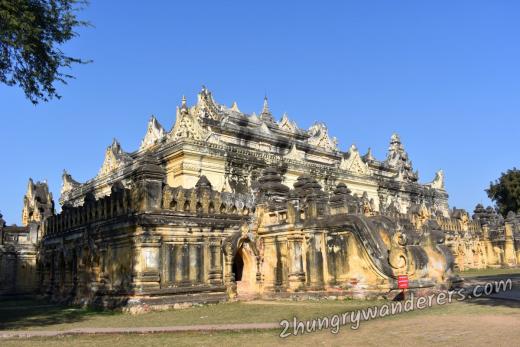


17. Nan Myin Tower and the royal palace
(Google Maps - tower, Google Maps - Prince's Lake, Google Maps - Princess' Lake)
Not much is left of the palace that once stood in the middle of the city. The earthquakes took their toll on it and after that whatever survived was taken to be part of the new one in Amarapura. The only real reminder of where the royal palace of the empire of Ava was two centuries ago is now the only standing building - Nan Myin tower and the two artifical lakes - the southern one - for Prince, and the northern one - for Princess.
Up until few years back the tower must have been a great viewpoint allowing visitors to climb to the top and presenting views of the surrounding temples and monasteries, ruined stupas and golden zedis, rising from the greenery, but unfortunately, today it is tilted slightly to the side and not deemed structurally stable enough to support tourist going up, locked with a metal door.
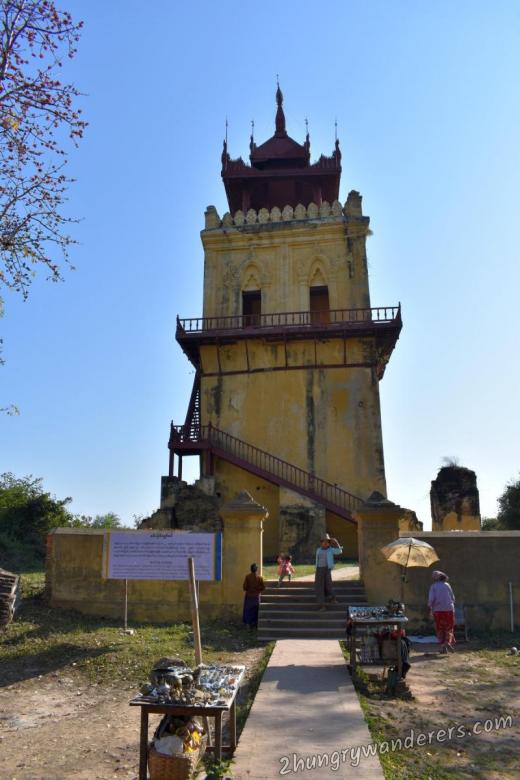
18. Shwe Myauk Taung
Exiting the ancient city through the east most southern gate we see this temple on our right. This smallish pagoda is best viewed over the moat and the wooden bridge that leads to it.
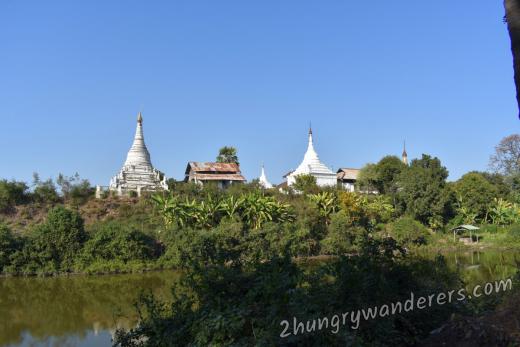
Comments